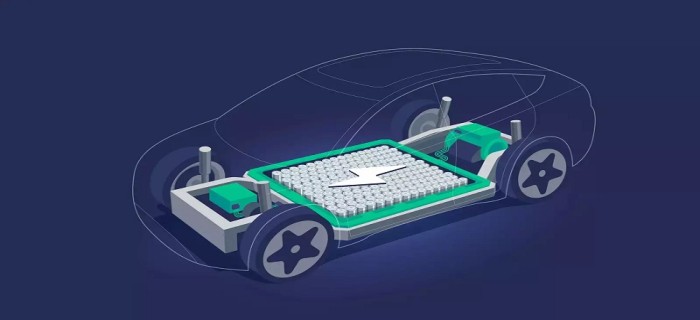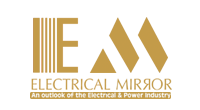
Electric Vehicle Batteries: Technological advances, obstacles, and the route towards sustainability
16 Dec 2023
Explore the evolving landscape of electric vehicles (EVs) in the transportation sector, with a focus on groundbreaking battery technologies like solid-state and metal-air batteries. Despite challenges, the global shift toward EVs, especially in the two-wheeler segment, signifies a crucial step towards a sustainable and environmentally conscious future.
After the energy industry, the transportation sector is the second-biggest emitter of greenhouse gases. Governments, industry associations, and researchers throughout the world see it as their prime objective to reduce the environmental consequences of the sector and address this problem. The past five years have witnessed a huge growth in the market for electric vehicles, which is largely driven by customer inclination towards zero-emission vehicles, especially electric scooters.Despite the COVID-19 pandemic impacting worldwide production of vehicles, overall sales volumes of EVs remained positive. As per Market and Markets, the market for all electric vehicles is expected to increase from around $388.1 billion in 2023 to $951.9 billion by 2030 at a CAGR of 13.7%.
Electric vehicles have been in the market for a while now. However, decreasing average costs coupled with a growing preference for eco-friendly alternatives has encouraged consumers’ affinity for them. Government mandates for EVs are driving up their efficiency, and as they get more and more capable of charging quickly, EVs will eventually become too appealing to ignore. The trend is also largely driven by global net-zero ambitions, where several countries intend to discontinue the sale of all new ICE vehicles in a few years. However, some issues remain with regard to electric scooters or cars; for instance, range anxiety, battery life, and sustainability.
Significant Developments in EV Battery Technology
The development of battery chemistry is one of the biggest advances in EV battery technology. To increase lithium-ion batteries' lifetime, energy density, and efficiency, scientists and engineers are constantly adjusting their chemistry.
olid-State Batteries
Solid-state batteries are set to revolutionize the front line of electric vehicle (EV) battery technology. Replacing wet and gelled ones with these solid materials provides for better safety, performance, and duration. For instance, solid-state batteries have higher energy densities than conventional ones, thus permitting more energy to be packed into the same volume.Established automakers, together with some startups and other pioneering companies, conduct active research in this area, thus indicating an auspicious prospect and bright perspective for such a revolutionary technology in the electric vehicle market and industry.
Metal-Air Batteries
In an endeavor towards advancing energy storage, metal-air battery technology is the next step. They are essential to enabling affordable EVs. These batteries make a contribution to the friendly environment through the use of metals such as zinc or aluminum, which reduce the total weight and hence improve the efficiency of the vehicles. Metal-air battery technology promises to change the EV market into an attainable goal of sustainable transport with a reduce the total weight and hence improve the efficiency of the vehicles. Metal-air battery technology promises to change the EV market into an attainable goal of sustainable transport with a reduced carbon footprint.
Present Battery Technologies: Challenges
Battery technologies, while gaining popularity in electric vehicles (EVs), face persistent challenges hindering widespread acceptance. Issues such as limited driving range, high maintenance costs, battery-related concerns, and inadequate charging infrastructure prevail, particularly in many Asian markets. Additionally, the acceptance of EV technology and the initially high purchase cost remain pivotal concerns.Lithium-ion batteries, reaching physicochemical limits, pose technical obstacles, with extended charging times deterring consumers. A potential solution lies in focusing on LFP (Lithium Ferro Phosphate) batteries to address these challenges and propel EV adoption. LFP batteries offer a promising solution to prevalent electric vehicle challenges. With a longer lifespan, improved safety, and faster charging capabilities compared to NMC (Nickel Manganese Cobalt) batteries, LFP addresses concerns related to maintenance costs and extended charging times. Hence, embracing LFP technology can pave the way for more accessible and widely accepted electric vehicles, mitigating the obstacles outlined in the industry.Despite these obstacles, electric vehicles are the way of the future for transportation, and as long as technical advancements and innovations continue, the advantages of electric vehicles will only grow.
Electric Vehicle Batteries: The Path to Sustainability!
The global embrace of electric vehicles (EVs) marks a crucial stride towards a sustainable future. Electric vehicles, encompassing battery-electric vehicles (BEVs), plug-in hybrid electric vehicles (PHEVs), and hybrid electric vehicles (HEVs), operate on electricity, presenting a cleaner and environmentally friendly alternative to petrol-driven automobiles. Particularly, the two-wheeler segment holds immense promise for propelling this positive shift.
EVs offer numerous advantages, from zero tailpipe emissions to lower operational costs due to the affordability of electricity. With fewer moving parts, they demand less maintenance, and their remarkable energy efficiency, utilizing nearly 80% of battery energy, surpasses that of traditional internal combustion engines. Transitioning the focus to the two-wheeler segment amplifies these benefits, enhancing accessibility and overcoming hurdles faced in the mainstream acceptance of electric vehicle.While initial costs and charging infrastructure challenges have been witnessed in the car segment, the two-wheeler domain holds the potential for quicker adoption. Electric two-wheelers, with their efficient design and urban-friendly features, present a compelling solution. As technology advances and charging infrastructure expands, range constraints and affordability concerns will diminish, further propelling the positive trajectory of electric two-wheelers. Embracing electric mobility, especially in the two-wheeler space, is a definitive step towards a more sustainable and environmentally conscious future for all.



leave your comment